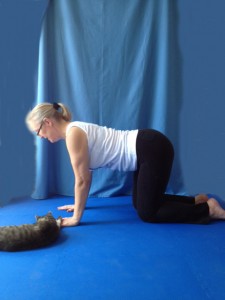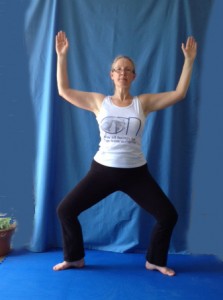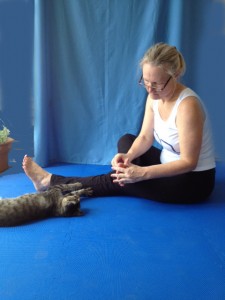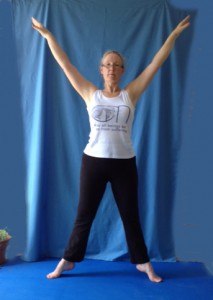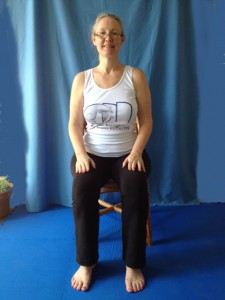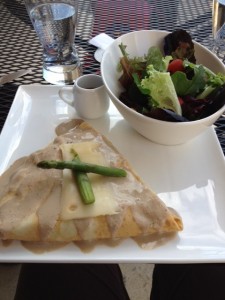 Leading a useful, pleasant life requires energy. Although those wiggling ads on the Web promise me infinite energy if I buy a book, an apparatus or some seemingly magical supplement, I can recharge my battery without paying the hard-sell pros any of my hard-earned cash.
Leading a useful, pleasant life requires energy. Although those wiggling ads on the Web promise me infinite energy if I buy a book, an apparatus or some seemingly magical supplement, I can recharge my battery without paying the hard-sell pros any of my hard-earned cash.
I’ll share some of my energy secrets with you and I hope you will fill in Number 10 with one of your energy recharging practices.
10 ways I recharge my energy:
1. Practice yoga
Technically, my yoga is usually “charging” rather than “recharging.” While I wait for my water to boil in the morning, I do a few sun salutations, usually at least three sun salutation A and three sun salutation B. If the kettle hasn’t boiled yet, I add any postures that I feel like adding or dance around in the kitchen.
2. Practice mindfulness
The practice of resting my mind by disengaging from my thoughts and feelings is vital to me. I like to start and/or end a day with about 20 minutes of mindful attention to my breath. If I find my thoughts are leading me to tense my shoulders (or anywhere else!) during the day, I pause wherever I am and draw my attention away from thoughts and toward the breath until I feel the muscles in my jaw and the middle of my forehead soften.
3. Drink warm water
A few years ago I consulted with an Ayurvedic nutritionist who introduced me to therapeutic uses of drinking hot water. For her clients who drink coffee, she recommends starting the day with a cup of warm water (boiled, not microwaved). I start every day this way. If I feel dizzy, inordinately hungry or more stressed than the day’s activities merit, I have another cup of warm water. Sometimes two.
4. Care for someone you love
Although I might have things on my mind from the work day, I put them aside when I care for my kitties. The outside kitties greet me in the drive, and the insiders are waiting at the door. All of them are eager to see their beloved human, and I leave my peevish thoughts from work in the car. We have several feeding and grooming rituals that nurture me at least as much as they nurture the cats.
5. Make something
A few years ago, most of my “somethings” were edible. During a particularly stressful time at work, I acquired a new cookbook. By Sunday afternoon one weekend, I had made SIX new dishes. Not only did learning to make the new dishes move my mind away from my worries, all that cooking also gave me an excuse to invite friends over to share the bounty. Now, I’m more likely to draw with my markers. ( You can see some of my drawings in our ArtFire shop.)
6. Play with my online friends
My online community changed my life. Someone is always awake in my virtual world. Someone is always ready to help figure out what an overwhelmingly horrible smell might be and to laugh when it turns out to be skunk, not a meth lab. Someone is always ready to play or lend an ear to hear about a distressing day. My online friends’ generosity inspires me to live out as many of my generous and kind impulses as I can. Especially Henry, the most generous bear on Earth.
7. Watch a show or film with an engaging plot
I watch crime shows when I want to get out of my own soup. Comedies just don’t do it for me. The only shows I find really funny also remind me of the big social, political and economic problems that worry me. Fail. When I watch Luther or Criminal Minds, for example, I am riveted to the story. I suppose I could pick up more to worry about from the shows that focus on the cruelest, most out of control people, but generally I don’t even have nightmares after watching. I must say that I can’t watch two in a row and sometimes I’m so exhausted after watching that I need to watch a bit of fluff before turning off the TV.
8. Get a change of scenery
Sometimes, I want a really big change of scenery, like going to the Himalayas in 2009 or Southeast Asia in 2007. Most of the time, however, I’m not that extravagant. The drive to the coast from here is about 3 hours, and I’ve gone twice in 10 years. Mostly, I like to go into the city and sit in a coffee shop where I can see people reading and hear them talking about books and movies. Or I like to go to art museums or galleries.
9. Do something kind
I don’t mean something extravagant. I just mean that when I notice I’m feeling overloaded or run down, I deliberately look for the kindest approach to the situations I find myself in. I hold the door for someone. I buy lunch for my companion. If I’m not around other people, I practice a little loving kindness meditation. I always start with myself and then hold others in mind when I think or recite, “May you be peaceful. May you be safe. May you be happy. May you be healthy.” If I can’t find it in my heart to offer loving kindness to other human beings, I offer it to my cats. Invariably, I feel better for having found a space for kindness in my own heart.
10. I could go on and on, but I’d like to know…
What do YOU do to charge up or recharge?



